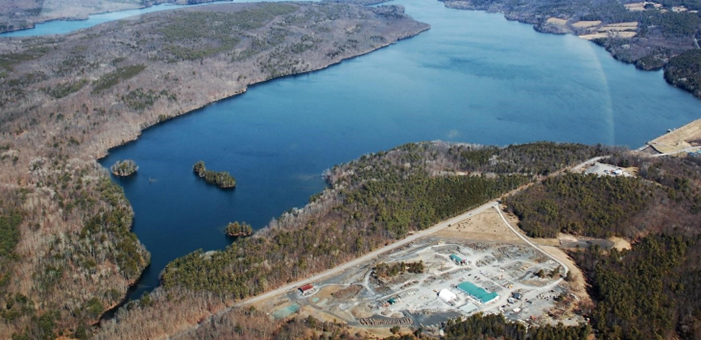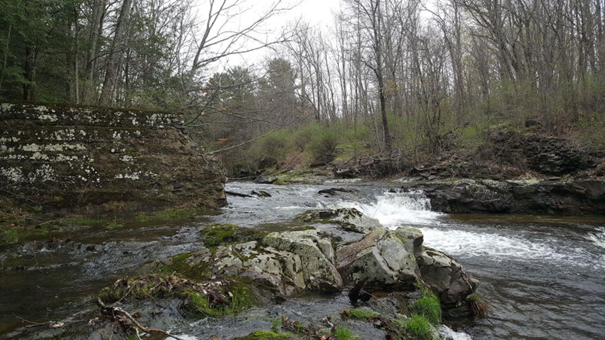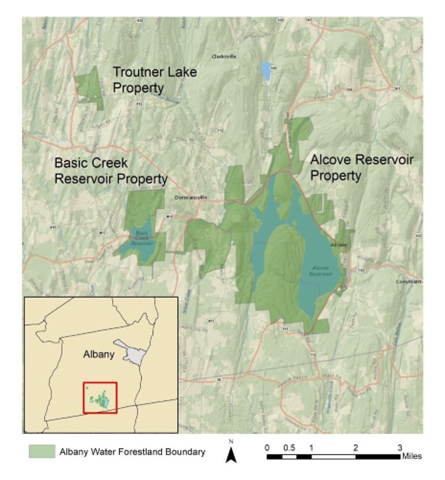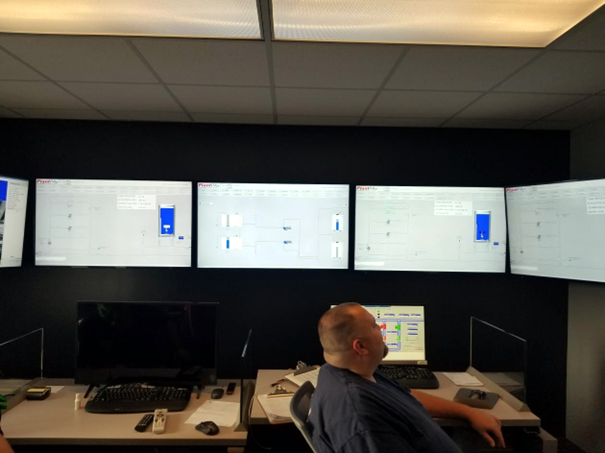|
“Water is life. We have a great responsibility to deliver safe and reliable potable water to our residents and customers each and every day. We also have a responsibility to be stewards of the resources we have inherited during our tenure and to turn over to the next generation of Department leadership a system that is capable of continuing to serve our community for decades to come as a result of our efforts.” --Joseph E. Coffey, P.E., Albany Water Commissioner since 2014

The Alcove Reservoir located in the Town of Coeymans, NY serves nearly 100,000 residents in the City of Albany. Constructed from 1928 to 1932 with an average depth of 25 feet (max 75 feet) along 18 miles of shoreland and 6,300 acres of watershed land, the reservoir has 12 billion gallons of storage – a 600-day supply when full. The Department also has purchase agreements to sell water to the Towns of Bethlehem and Guilderland, NY. Albany, as the Capital of New York State, has thousands of State employees served by the system, along with the University of New York at Albany and SUNY Polytechnic Institute, and a Nanotech complex. - Photo LightHawk Conservation Aviation
Award-winning pleasant tasting safe water and responsible stewardship!
WATERTODAY reached out to Joseph Coffey, Albany’s Water Commissioner to learn more.
“It’s all about teamwork!” Coffey told WT. “The relationship and constant communication between Administration, the Watershed/Forestry Team, the Treatment Plant Team, and the Distribution Systems Operations Team assures the delivery of healthy, safe potable water to City of Albany residents and interconnected surrounding communities. The water that comes out of the tap is also aesthetically pleasing and has won the highest-level tasting competitions in the State.”
Forests To Faucets

Healthy Forests Foster Clean Drinking Water. The City of Albany’s drinking water reservoirs are surrounded by 5,000 acres of forest that work to filter surface and groundwater to improve water quality. To protect these lands, the Albany Water Board has joined the Nature Conservancy’s Working Woodlands Program. - Photo Albany Water Department
View the Forest Management Plan (PDF) to learn more

the Albany Water Board has entered into a Conservation Easement with the Mohawk
Hudson Land Conservancy is a legal agreement that restricts future development in the forestlands. Having this agreement in place protects the water supply for the City of Albany. - Image Albany Water Department
“The Watershed Group works diligently to maintain and deliver the highest quality water source while also promoting healthy forest practices and conservation.”
Coffey describes the first comprehensive Forest Management Plan implemented in the Water Department
Sustainable forest management is integral to the robust ecological system and services that support the reservoirs. This type of management includes a full and comprehensive inventory and understanding of the lands and forests directly surrounding the reservoirs. This not only takes into consideration the health and diversity and composition of the forests and the threats from issues such as invasive species and deer browse, but also the soils, wildlife, riparian forest, land disturbance, stakeholder involvement all while incorporating climate-based inventories, planning, and implementation to the forest management strategies that the Department utilizes. Many of these types of monitoring and management activities were not being utilized prior to incorporating this type of forest management.
In addition, the program has enabled us to develop and market a voluntary carbon credit program that is providing a revenue stream for us to reinvest in our watershed management programs.
The Feura Bush Water Treatment Plant
Coffey outlines the seven stages of treatment:
Treatment begins at our source point where we inject a small dose of Sodium Permanganate, used as an oxidizing agent to reduce organics and assist our process in taste and odor removal. This chemical has approximately 9 miles of contact time before entering the treatment facility at the head of the plant where all raw water flow is dispersed through 220 aeration nozzles into our Aeration Basin.
By aerating the raw water, we oxidize once again, treating for additional organics, taste and odor. The raw water travels through a series of flumes into the Mixing Basin where PCH180 is added. PCH180 is a coagulant or flocculant that binds suspended solids to create floc. The binding or coagulation/flocculation process creates weight which builds a blanket of these suspended solids and settles on the bottom of the sedimentation basins in the next phase of treatment-- sedimentation.
A Sedimentation Basin is essentially a large weir in which the weighted sludge blanket falls and the highest quality water with the least remaining suspended solids flows across the top of the basin.
The water then flows into the Fume filter and from there into each of the eight filters at the facility.
Utilizing anthracite and sand as the filter media, these filters collect any remaining solids and filter water to the micron level. A small amount of 12.5% to 15% Sodium Hypochlorite (similar to household bleach) is injected into the Fume filter, prefiltration, in order to keep any organics or algal growth from forming on the filter walls or within the media.
Post filtration, two additional chemicals are added. First, the treated water is dosed with an additional amount of Sodium Hypochlorite as the main means of disinfection and downstream residual disinfection. Secondly Hydrated Lime for pH adjustment in order to assure a positive Langelier Scaling Index (LSI) and promote distribution piping system corrosion control.

In the Treatment Control Room at the Feura Bush Water Treatment Plant, all processes are acutely managed and monitored as each has a great effect on public health and safety.
Coffey Talks About Challenges
The Department is fortunate to have a resilient watershed without a lot of industry, so the land and waters are moderately protected from certain source contaminants that other public water suppliers are threatened by such as PFAs.
However, the water and watershed still have challenges which may include pollutants primarily from runoff of residential and agricultural properties, failing septic systems, and some industrial uses.
Most waters in New York will experience some level of HABs during the summer months and into fall turnover. We monitor for these issues by visual inspection of the watershed and reservoirs as well as intensive field and laboratory-based water quality of the reservoirs and tributaries. The Department examines the data for seasonal variations as well as issues that could be due to point or non-point source water contamination and subtle changes that may be induced by climate change.
The Department attempts to work with the landowners within the watersheds to enhance and protect the waters.
On Lead—The Albany Water Board is committed to a Lead Water Service Replacement Program. While we have a successful and effective corrosion control program and meet all current lead and copper compliance standards, there is no safe level of lead in drinking water. There are currently over 12,000 lead water services remaining in the distribution system. We have instituted a grant program to assist property owners with replacing their lead service and are dedicating additional resources to expedite the removal of all remaining services as quickly as possible.
Aging infrastructure, the Treatment Facility and related appurtenances are nearing 100 years old. Administration and Facility Management has the daunting task of managing the Capital Infrastructure Improvement Plan while also repairing and maintaining the legacy infrastructure and equipment still in place.
Implementing modern safety requirements in a facility of this vintage can be difficult but it is paramount for not only staff but the potential visiting public as well. In addition to infrastructure revitalization, there must be a focus on integrating the latest in technology advancements (computing and networking equipment) to meet the ever-changing regulatory requirements of different agencies.
Skilled Sustainable Workforce
Changing the Culture – Coffey's Message
The American Water Works Association recognized years ago, a lack of interest and thus a lack of skilled persons entering the water and wastewater industries. This lack of interest coupled with the generalization that there are no meaningful well-paid positions in the municipality utility sector have led many to consider other options outside the public service.
Reality is quite different.
Municipal entities employ professional engineers, computer and networking technicians, instrument technicians, state-certified operators, electricians, and highly skilled utility mechanics.
Part of our responsibility as administrators of our system is to reintroduce the municipal sector and our utilities as an enticing place to come to work. Reintroducing the fact that we are even here is a challenge.
Many know water comes from the faucet while having no idea where the water is treated, how it is produced, or how it enters the home. Our Department of Water and Water Supply works often with local schools and STEM programs such as Future Cities to introduce younger generations to this industry in hopes of attracting and creating a sustainable workforce moving forward into the future. We do great things!
I have served as Albany Water Commissioner since 2014 with a previous background in the private sector managing /consulting an engineering firm and leading a not-for-profit Health and Education consortium. I have been blessed with the best possible career opportunities.
I must tell you though, that nothing is more professionally rewarding to me than public service where I have the opportunity to serve the city where I live and engage my community at all levels every single day.
|







